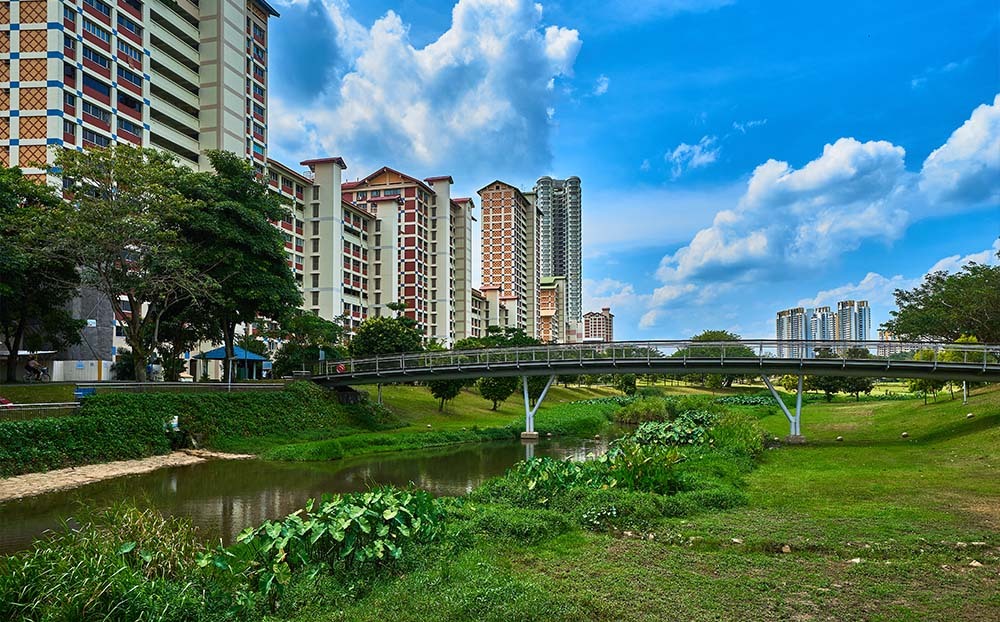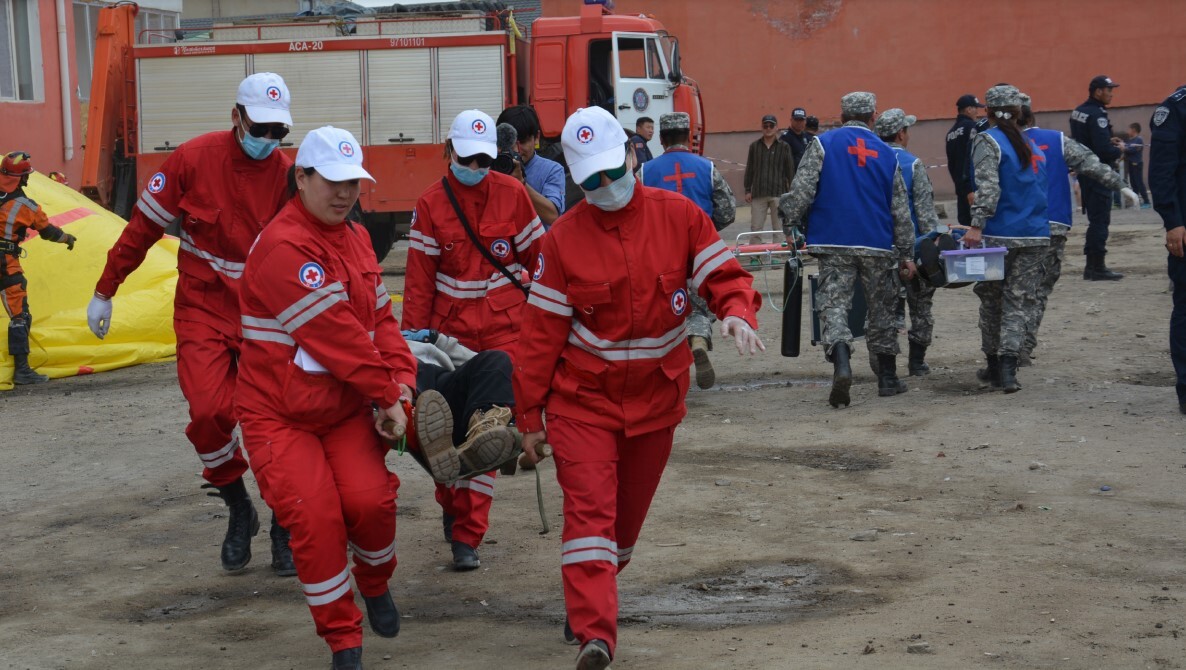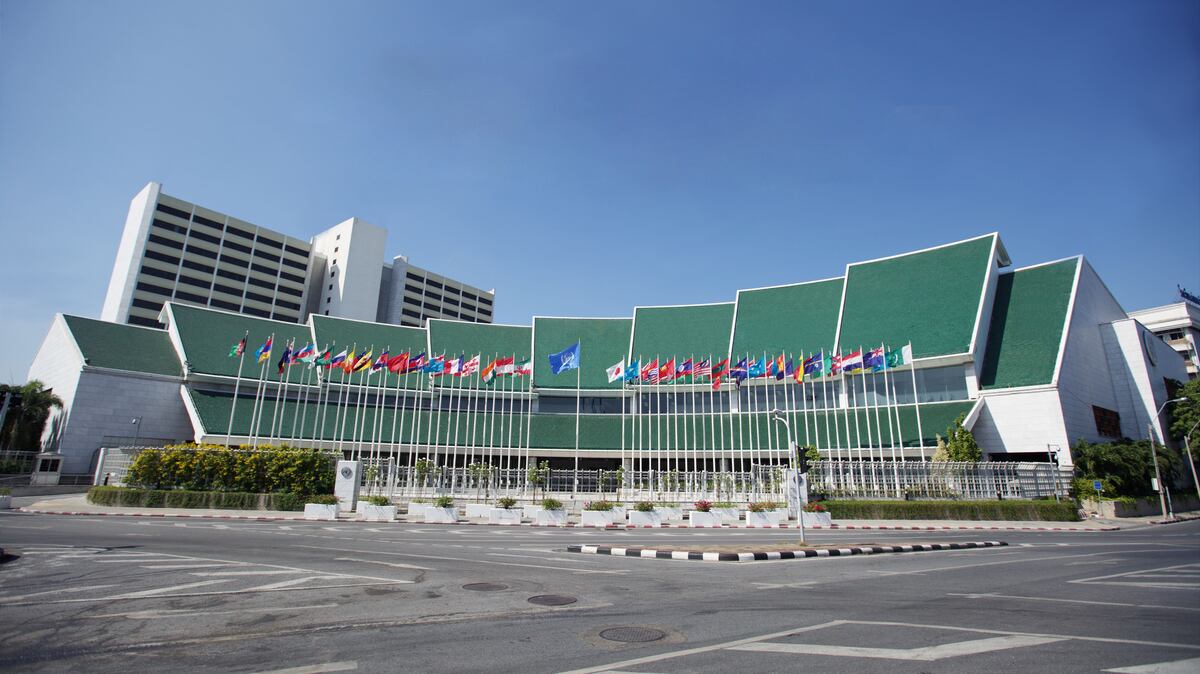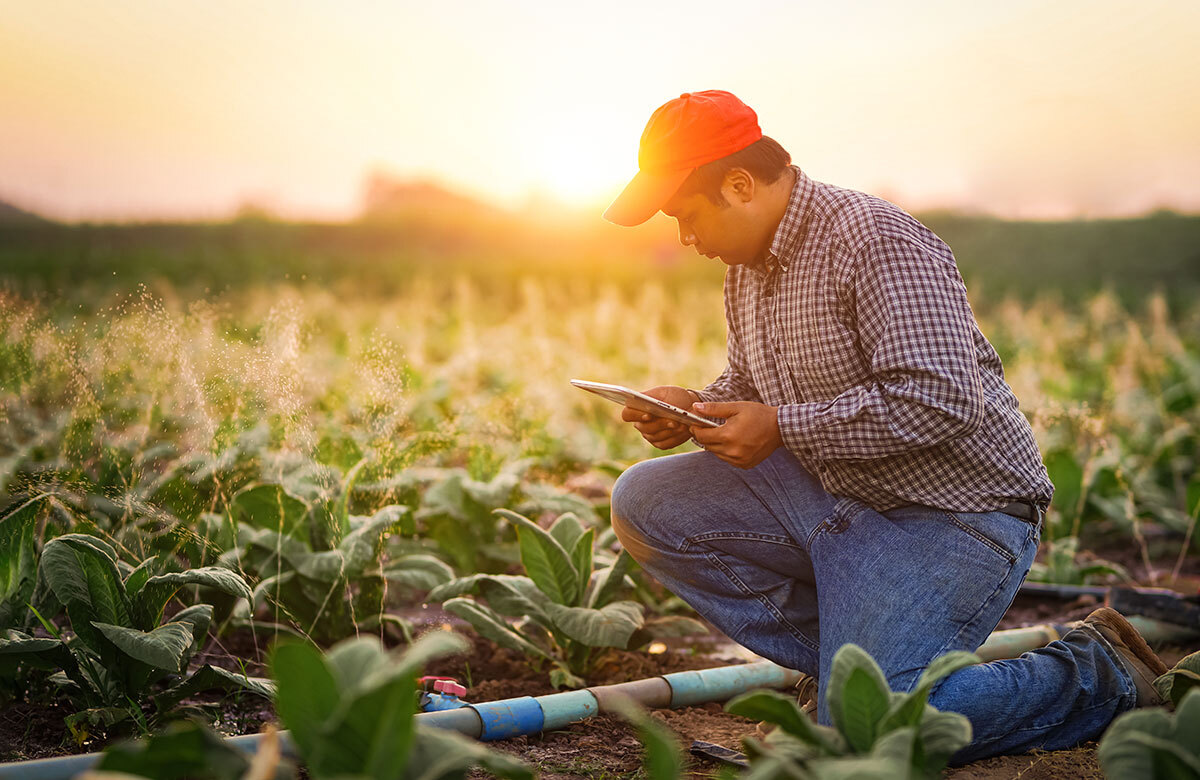
Photo by Ridzuan Sinain via iStock
Issue
Urban rivers in Singapore are surrounded by concrete embankments and riverbeds that degrade the natural ecosystem and ecosystem services
Solution
The Active, Beautiful and Clean (ABC) Waters program restored rivers to their natural condition and improved the urban environment and life
Restoring urban rivers to their natural condition
Singapore has a total of 32 major rivers and 17 reservoirs, and 990 km of drains and canals that service an area of 728.6 km2. With a population of 5.69 million living in one of the densest urban spaces in the world, achieving sustainable water security is an important objective for Singapore. In addition to water security, Singapore also has to tackle urban floods associated with heavy rainfall events, high tides, and congestion of riverbeds due to urban development and related encroachment. There has been a 22% increase in the average annual rainfall between 1980 and 2012, which has serious implications for flood conditions in the city. Some of the noteworthy effects of past floods include traffic congestion, deterioration of health, evacuation of people from the flood-affected areas, disruption of communication facilities, and disruption of education. The general disruption of life from flood events can be a cause of concern if flood mitigation measures are not taken.
Further, improving urban life is an important objective for the government, including improving human health and providing a healthy environment. Meeting these objectives is possible by improving the water quality, providing access to clean natural and green spaces, improving air quality, improving biodiversity, and providing natural recreation facilities for the urban dwellers. Singapore has a high level of biodiversity but many of these plant and animal species are vulnerable to climate change. Hence, protecting biodiversity from the effects of urban development is another concern for the government. These needs, combined with the need to mitigate floods and manage stormwater, pivoted the Singapore government to choose blue-green infrastructure (BGI) over grey infrastructure as BGI provides multiple benefits.
Opportunities and pathways to advance the issue
Several initiatives have been implemented by the government of Singapore to improve the urban environment in general and to improve flood mitigation and water quality in particular. For example, measures for improving the water quality include regulation of sewage systems and regular monitoring of inland and coastal waters. Measures for flood risk reduction include early warning (of heavy rainfall and flood events), delineation of flood-prone areas, proper waste management to mitigate drainage congestion, and building codes. The implementation of the source-pathway-receptor approach, which is similar to the lifecycle approach, provided an integrated way to reduce flood risk in the city. The government implemented area-based measures along the flood continuum, several of which have effectively reduced the impact of floods in the city. In addition, the government is adopting innovative concepts such as using bioswales to connect stormwater and other water sources with natural elements such as wetlands, reservoirs, and rivers to provide dynamic water circulation and management within the urban landscape. Because of these combined efforts, the flood-prone area in the city has been reduced from 56 ha in 2010 to 29 ha in 2019.
Active, Beautiful and Clean (ABC) Waters is one of the prominent measures implemented by the government of Singapore to meet the multiple objectives of improving the natural ecosystem, managing stormwater, improving water quality, and providing areas for public recreation and nature-public connection. The concept promotes active engagement with the community by enhancing the recreational value of water bodies, promoting beautiful landscapes, and improving water quality through the integrated management of water resources. This is a socio-ecological practice that brings BGI into the urban environment. Launched in 2006, the program aims to achieve a synergistic integration of waterways with their surroundings and the lifestyles of urban residents. The target is to create a multi-benefit BGI across the country by 2030. Multiple benefits have already been observed, including draining and treating stormwater, enhancing biodiversity, enhancing the living environment, and improving water quality. The success of this program provides high-value lessons for dense urban areas about how to integrate urban green spaces and waterways.
Key factors for success and replication
Many factors have played a role in the success of the ABC program, including the constant support and commitment provided by the national government, and the enhanced engagement of the people in the implementation of the program, e.g., by appreciating the recreational value provided by the ecological engineering. Clear and actionable guidelines were prepared by the Public Utilities Board that helped public projects adopt ABC design elements. In addition, the introduction of ABC Waters Certification provided developers with an opportunity for recognition and encouraged them to integrate the concept into their operations. Further, public and private organizations have been encouraged to incorporate ABC program features into their developments. This integrated approach with multi-sectoral involvement has further enhanced the project achievements.
Location
Related Information
- Government of Singapore, 2021, Flood Prone Areas
- Liao, K.H. (2019). The socio-ecological practice of building blue-green infrastructure in high-density cities: what does the ABC Waters Program in Singapore tell us?. Socio-Ecological Practice Research 1: 67–81
- National Environmental Agency. 2014. Singapore’s Third National Communication and Fist Biennial Update Report.
- National Environmental Agency. 2018. Singapore’s Fourth National Communication and Third Biennial Update Report. National Environmental Agency, Singapore.
- Public Utilities Board. 2018. Active, Beautiful, Clean Waters. Design Guidelines. 4th Edition. Public Utilities Board, Singapore.
KEYWORDS
- # Case Study
- # Biodiversity/Ecosystem
- # Human Health
- # Infrastructure
- # Life of Citizenry and Urban Life
- # Natural Disasters
- # Water Environment/Water Resources
- # Adaptation Action/implementation
- # Adaptation Planning/Policy
- # Disaster Prevention/Disaster Mitigation
- # Nature-based Solutions
- # Participatory Approach
- # Asia
- # Singapore
- # 2021




